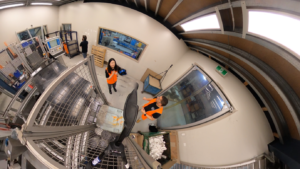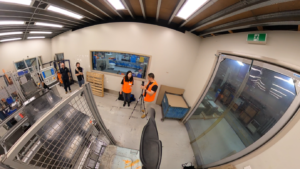Augmented Reality in Collaborative Robotics
Start: 1st May 2023
Expected end date:1st November 2026
This project explores how Augmented Reality (AR) can enhance human decision making in human-robot collaborative (HRC) tasks. In dynamic and complex manufacturing environments, human decision-making plays a crucial role in overall performance. AR offers several benefits, including:
- Integrating human decision-making considerations in the early design stages of HRC.
- Providing real-time visualisation, interactive feedback, and an intuitive user interface.
- Enabling design based on real-world manufacturing environments.
By leveraging AR, human workers and decision-makers can better understand how collaborative robots impact their workspace, workflows, and safety. A human-centered AR design approach can improve the acceptance of collaborative robots and foster innovative ideas to enhance human decision-making support. This, in turn, increases the effectiveness, efficiency, and safety of human-robot collaboration.
Expected Outcomes
The project aims to develop:
- A framework for understanding human behavior, particularly decision-making, in manufacturing tasks.
- An AR-driven, human-centered design approach for HRC.
- Guidelines for designing AR interfaces that optimise human-robot interaction.
Supervisory Team
- Principal Supervisor: Professor Glenda Caldwell
- Associate Supervisors: Professor Markus Rittenbruch, Associate Professor Muge Fialho Leandro Alves Teixeira, Dr Alan Burden
- External Supervisor: Dr Matthias Guertler
Publications
First Author
Other Publications
- Burden, A. G., Liu, Y., Vermeulen, J., (2024). Designing Effective AR Interfaces for Human-Robot Interaction: A Scoping Review and Practical Guidelines for Robot Pick-and-Place Tasks. In Proceedings of The 36th Australian Conference on Human-Computer Interaction (OZCHI ’24). ACM, New York, NY, USA, 16 pages


Associated Researchers
